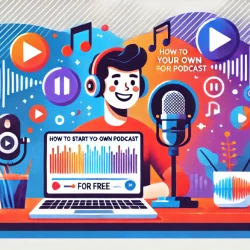The Essential Guide to Professional Book Design for Self-Publishers
When it comes to self-publishing, many authors pour their hearts into writing but overlook a crucial element that can make or break their book's success: professional design. A well-designed book isn't just aesthetically pleasing—it's a powerful tool that builds credibility, enhances readability, and ultimately drives sales. Whether you're publishing your first novel or your tenth non-fiction guide, understanding the fundamentals of book design is essential for standing out in today's competitive market.
Why Book Design Matters More Than You Think
First impressions happen in seconds. When potential readers browse through online bookstores or flip through pages in a physical store, your book's design speaks before your words do. A professionally designed book signals quality and professionalism, while poor design can undermine even the most brilliant writing.
Studies show that readers judge books by their covers—and their interiors too. Typography, spacing, margins, and layout all contribute to the reading experience. When these elements work harmoniously, readers can immerse themselves in your content without distraction. When they don't, even the most compelling story can feel difficult to engage with.
Key Elements of Professional Book Design
Cover Design That Captures Attention
Your cover is your book's primary marketing tool. It needs to communicate genre, tone, and quality instantly. Professional cover design involves understanding market conventions while adding unique elements that make your book memorable. Typography choices, color psychology, and imagery all play critical roles in attracting your target audience.
Interior Layout and Typography
The inside of your book deserves just as much attention as the cover. Proper book formatting includes selecting appropriate fonts, setting correct margins, establishing consistent heading styles, and ensuring proper line spacing. These technical details might seem minor, but they significantly impact readability and reader satisfaction.
Consistency Across Formats
Today's authors typically publish in multiple formats—print, ebook, and sometimes audiobook. Each format requires specific design considerations. Print books need attention to trim size and bleed, while ebooks require responsive formatting that adapts to different screen sizes and reading devices.
Common Design Mistakes to Avoid
Many self-publishers fall into predictable traps. Using too many fonts creates visual chaos—stick to two or three maximum. Neglecting white space makes pages feel cramped and overwhelming. Ignoring genre conventions can confuse readers about what type of book they're purchasing. Perhaps most critically, skipping professional proofreading of the formatted version can result in embarrassing errors that slip through.
Investing in Your Book's Success
While DIY tools have made self-publishing more accessible, there's real value in professional design services. Experienced designers understand the subtle nuances that distinguish amateur work from professional publications. They know how to balance creativity with readability, innovation with genre expectations.
If budget constraints limit your options, prioritize your investment. A professional cover design paired with solid interior formatting using templates can be an effective middle-ground approach. Many successful self-publishers recommend allocating 10-15% of your publishing budget to design elements.
Frequently Asked Questions
How much should I budget for book design?
Professional cover design typically ranges from $300 to $1,500, while interior formatting costs between $150 and $500 depending on complexity. Ebook formatting is generally less expensive, ranging from $50 to $200. Many designers offer package deals that can provide better value.
Can I design my book myself?
Yes, especially if you're willing to invest time in learning design principles and software. However, recognize the learning curve and be honest about your skills. If design isn't your strength, investing in professional help often pays for itself through increased sales and credibility.
What's the difference between print and ebook formatting?
Print formatting is fixed with specific dimensions, margins, and page counts. Ebook formatting must be fluid, adapting to different devices and user preferences for font size and spacing. Both require different technical approaches and file types.
How long does the design process take?
Cover design typically takes 2-4 weeks including revisions. Interior formatting can be completed in 1-2 weeks for straightforward projects. Complex books with images, tables, or special formatting may require additional time.
Should I design my cover before or after writing?
Most authors wait until the manuscript is complete, ensuring the cover accurately represents the final content. However, some find that creating a cover early helps clarify their vision and maintain motivation during writing.
Conclusion
Professional book design is an investment in your author career, not an expense to minimize. The visual presentation of your work influences everything from first impressions to reading experience to overall sales potential. By understanding design fundamentals, avoiding common pitfalls, and knowing when to seek professional help, you position your book for success in a crowded marketplace. Remember, your words deserve a presentation that matches their quality—because in publishing, how your story looks is almost as important as the story itself.
More to Read:
Previous Posts:






